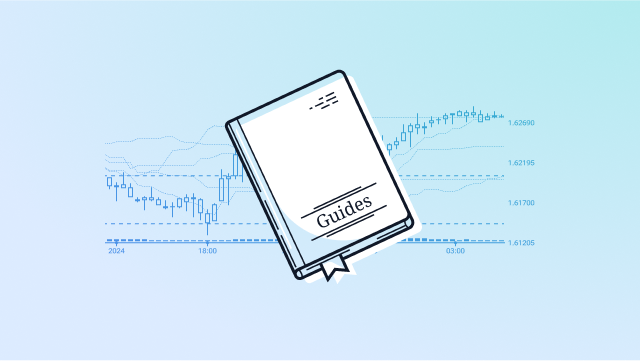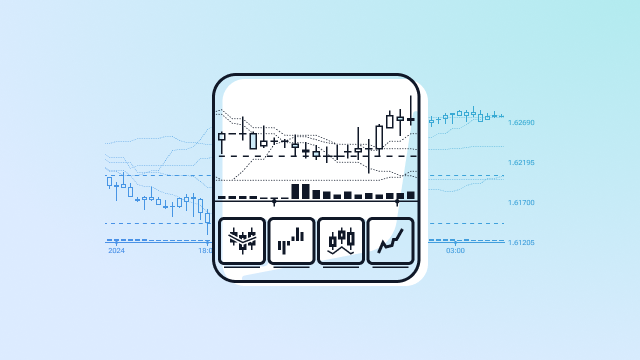Traders use many tools to make smart choices, and the MA indicator is a key one. The Moving Average helps spot trends, understand momentum, and find good times to buy or sell.
A Moving Average is made by averaging a security’s price over a set time. It makes the market’s ups and downs clearer, showing the trend more easily.
Knowing how to use the MA indicator well can really improve a trader’s plan. It helps them keep up with market changes.
Key Takeaways
- Understand the basics of the MA indicator and its role in trading.
- Learn how to calculate and interpret Moving Averages.
- Discover how MA can be used to identify trends and gauge momentum.
- Explore strategies for incorporating MA into your trading decisions.
- Recognize the importance of MA in enhancing trading strategies.
Understanding the Basics of Moving Averages
Moving averages are key in trading. They help us see market trends and make smart choices. They smooth out price data over time, making patterns and trends clearer.
What is a Moving Average?
A moving average is the average price of a security over a set time. It’s called “moving” because it updates as new data comes in.
The Purpose of Moving Averages in Technical Analysis
Moving averages have several roles in technical analysis. They help spot trends and find support and resistance levels. By looking at the slope and direction of moving averages, traders can understand market trends better.
Key Benefits for Traders
Using moving averages has big benefits. It leads to better trend spotting and improved risk management. By adding moving averages to their strategies, traders can make better choices and possibly earn more.
Types of Moving Average Indicators
Knowing the different moving average indicators is key for traders. They can greatly affect your trading plans and results.
| Type of MA | Description | Sensitivity to Price Changes |
|---|---|---|
| SMA | Simple average over a period: it finds the average price over a set time by adding prices and dividing by the number of periods. | Low |
| EMA | Gives more weight to recent prices: this makes it more responsive to current price changes than SMA. | High |
| WMA | Weights decrease as data gets older: puts more weight on recent prices. But, the weight decreases as the data gets older. It's similar to EMA but with different weight assignments. | Medium to High |
| HMA | Reduces lag, responsive to current price | High |
| VWMA | Weights based on volume of trades. It gives more importance to periods with higher volume. | Varies |
Which Moving Average Type to Choose
Choosing the right MA depends on your trading strategy and goals. For example, short-term traders might prefer EMA or HMA for their quick response. Long-term investors might choose SMA for its simplicity.
Knowing the different moving average indicators and their uses can improve a trader’s market analysis and decision-making.
How to Calculate Moving Average Formulas
Learning to calculate moving average formulas can really help with trading. Moving averages are key in technical analysis. Knowing how to do them is crucial for traders. We’ll go over how to calculate different moving averages step by step.
Simple Moving Average Formula and Calculation Steps
The Simple Moving Average (SMA) is found by adding the closing prices of an asset over a set number of periods. Then, you divide by the number of periods. The formula is: SMA = (Sum of closing prices over N periods) / N.
To find a 5-day SMA, add the last 5 days’ closing prices and divide by 5.
Example Calculation:
| Day 1: | $10 |
| Day 2: | $12 |
| Day 3: | $11 |
| Day 4: | $13 |
| Day 5: | $14 |
| SMA = ($10 + $12 + $11 + $13 + $14) / 5 = $12 |
Exponential Moving Average Formula and Calculation Steps
The Exponential Moving Average (EMA) puts more weight on recent prices. It uses a smoothing factor in its formula: EMA = (Current Price * Smoothing Factor) + (Previous EMA * (1 – Smoothing Factor)).
The smoothing factor is usually 2 / (N + 1), where N is the number of periods.
Weighted Moving Average Formula and Calculation Steps
The Weighted Moving Average (WMA) also focuses on recent prices but in a linear way. It multiplies each price by a weight, with newer prices getting higher weights.
| Day | Price | Weight | Weighted Price |
|---|---|---|---|
| 1 | $10 | 1 | $10 |
| 2 | $12 | 2 | $24 |
| 3 | $11 | 3 | $33 |
| 4 | $13 | 4 | $52 |
| 5 | $14 | 5 | $70 |
| Total: 15 | Total: $189 | ||
| WMA | $189 / 15 = $12.60 |
Using Trading Platforms for Automatic Calculations
Most trading platforms, like MetaTrader or TradingView, can automatically calculate moving averages. Just pick the type and period, and the platform does the math.
Understanding moving averages helps traders use these indicators better. This can really improve their trading strategies.
Trading Strategies Using Moving Average
Moving averages are key in technical analysis. They help traders understand market trends. By smoothing out price data, they show the trend’s direction and strength.
How to Identify Trends with Moving Averages
Moving averages are used to spot trends. A rising average means an uptrend, while a falling one shows a downtrend. The slope of the average tells us how strong the trend is.
Identifying trend reversals is also important. Moving averages can signal a change when the price crosses over or under the average. This can be an early sign of a market direction shift.
Step-by-Step Guide to Moving Average Crossover Strategy
The moving average crossover strategy uses two moving averages to give buy and sell signals. Here’s how to do it:
- Choose two moving averages: a short-term MA (e.g., 50-day SMA) and a long-term MA (e.g., 200-day SMA).
- A buy signal is given when the short-term MA crosses above the long-term MA.
- A sell signal happens when the short-term MA crosses below the long-term MA.
This strategy helps traders catch the start of trends and ride the momentum.
Using Moving Averages as Dynamic Support and Resistance
Moving averages can also be support and resistance levels. In an uptrend, they act as support where prices tend to bounce back. In a downtrend, they act as resistance where prices may face selling pressure.
Traders often watch the 50-day and 200-day SMAs for potential support or resistance.
Multiple Timeframe Analysis with Moving Averages
Using moving averages across different timeframes gives a better market view. For example, a trader might use a short-term MA on a 15-minute chart for quick entries and exits. They might also look at a longer-term MA on a daily chart to see the overall trend.
Common Mistakes to Avoid When Trading with Moving Averages
One mistake is relying too much on moving averages without other analysis. It’s key to use moving averages with other indicators and risk management to avoid false signals.
Another mistake is using moving averages alone without knowing the market conditions. For example, in times of high volatility, moving averages can give more false signals.
Examples of Successful Moving Average Trades
Imagine a trader using the 50-day/200-day SMA crossover strategy on a stock. When the 50-day SMA goes above the 200-day SMA, they buy the stock, catching the start of an uptrend. When the 50-day SMA goes below the 200-day SMA, they sell, avoiding big losses.
These examples show how moving averages can be used in trading strategies to make successful trades.
Conclusion
Learning about moving averages can really help traders understand markets better. This guide covered the basics of moving averages, how they’re calculated, and their use in trading.
Traders can spot trends and predict market changes by using moving averages. They can adjust their plans based on these insights. It’s important to pick the right moving average for your trading style and goals.
This guide offers a solid base for traders to improve their strategies. It shows how moving averages can be a key tool in trading. As traders get better and the market changes, this knowledge will be very useful.
FAQ
What is a Moving Average (MA) indicator?
A Moving Average (MA) indicator is a tool for analyzing charts. It smooths out price data to show trends and patterns more clearly.
How do I use Moving Averages in my trading strategy?
Moving Averages help spot trends and predict price changes. They also show support and resistance levels. Choose the right type for your trading style.
What is the Moving Average formula?
The formula for Moving Averages changes based on the type. Simple Moving Averages average prices over time. Exponential Moving Averages weigh recent prices more.
How do I choose the right type of Moving Average for my trading?
Pick a Moving Average based on your trading goals. Simple Averages are for long-term trends. Exponential Averages are better for quick price changes.
Can I use Moving Averages on any trading platform?
Yes, platforms like MetaTrader and TradingView have Moving Average indicators. They make it easy to add them to charts and customize.
How can I avoid common mistakes when trading with Moving Averages?
To avoid mistakes, use the right Moving Average for your strategy. Don’t rely only on MA signals. Always use other analysis and risk management too.
 Backtest Your Trading Strategy
Backtest Your Trading Strategy
 ไทย
ไทย
 Tiếng Việt
Tiếng Việt
 Polski
Polski
 Türkçe
Türkçe
 Nederlands
Nederlands
 Română
Română
 한국어
한국어

